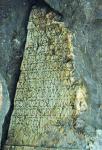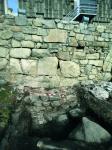Summary (English)
PHILIPPOPOLIS (Maya Martinova – maya_martinova@abv.bg) The theater was built during the reign of Domitian on the southern slopes of the hills of Philippopolis. It accommodated up to 7000 spectators. The seats were orientated to the south, towards the agora in the lowland. The theater was 82 m in diameter. The cavea consisted of 28 rows of marble seats, divided in two tiers by diazoma. The orchestra was 27 m in diameter. The skene had three floors in Roman Ionic and Roman Corinthian orders. According to inscriptions, the theater was also used as the seat of the Provincial Assembly of Thrace. In addition, gladiatorial games were probably arranged in the theater during the visit of Caracalla in AD 214. At the end of the 4th century AD the theater was destroyed. It was excavated from 1968 to 1979 and reconstructed in 1981. In 2016, a staircase was explored, built in the beginning of the 4th century AD over the ochestra close to the eastern paraskenion and the parodos. It was related to the last reconstruction of the theater. Fragments from bases of statues and other architectural fragments were reused in the construction of the staircase. Part of the base of an honorary statue with a Greek inscription was discovered. The honored person was Titus Flavius Kotys, son of Rheskouporis, from the Quirina tribe, the first man in the province since his ancestors, three times archiereus of the Province of Thrace and its cities, the legal representative of the metropolis and superintendent of the construction works, who as the first archon adorned the city with magnificent buildings, loved by the people and a lifelong priest of Asclepius. The statue was erected by a person whose name was not preserved and an additional name Pollio, son of Sostratus. The inscription dated to the AD 90s during the reign of Domitian. The Early Byzantine fortification wall was discovered to the south of the skene. It was 1.30 – 1.46 m wide, built of roughly-cut stones bonded with mortar and adjoined the southern side of the Late Hellenistic fortification wall. A stratum of the Early Bronze Age was documented as well.
- Maya Martinova - Archaeological Museum – Plovdiv
Director
Team
Research Body
- Archaeological Museum – Plovdiv






![Download [PDF]](/excavation/skins/fasti/images/results/download_sml.png)





